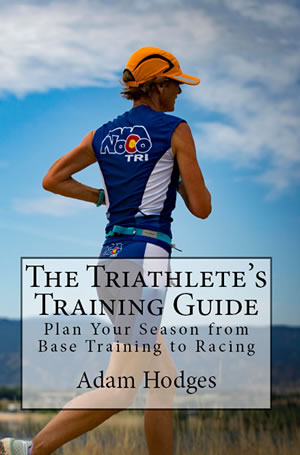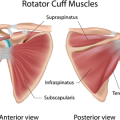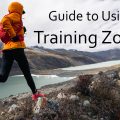How do you determine your swimming pace zones? Read this guide to find out–excerpted from The Triathlete’s Training Guide.
Pace is another means of measuring and monitoring your training intensity. The advantage of pace is that it can be easily gauged with a watch or pace clock. Pace works best when the terrain is relatively constant, such as in the pool. But pace can be less reliable when throwing in confounding variables, such as waves or currents in open-water swimming. For this reason, pace tends to work best for swimming in the pool. Most swimming pools conveniently display a pace clock, for example. And even if you don’t swim at a facility with a pace clock, you can use your watch to monitor pace.
Your pace zones are based off your pace at lactate threshold, also known as your threshold pace—typically termed T-pace (for “threshold pace”) for swimming. Recall from chapter 2 that you can generally maintain a pace at your lactate threshold for about an hour. But that duration may be as little as 5 minutes for untrained individuals and as close to 90 minutes for elite endurance athletes.
To determine your swimming pace zones, you first need to find your threshold pace. To do this, swim a 1,000-yd or 1,000-m time trial (TT) at a race-level effort. This means you should go into the TT well rested and ready to go as fast as you can over that distance. Record your time for the TT and then divide that time by 10 to find your pace per 100. Typically, this works out to be a good approximation of your threshold pace.
Write this number in table 4-3 below where it says “T-pace.” From there, calculate your pace for the other zones by adding or subtracting the number of seconds indicated. To create a range, add and subtract 2-3 seconds from the number you come up with for each zone. This will give you a good estimate of the pace you want to target when working in the different training zones.
Table 4.3. Pace zones for swimming based on threshold pace (pace per 100)
Zone 1 = Very easy effort
Zone 2 = T-pace + 10 sec
Zone 3 = T-pace + 5 sec
Zone 4 = T-pace
Zone 5a = T-pace
Zone 5b = T-pace – 5 sec
zone 5c = Maximum effort
Instead of figuring the pace zones by hand, you can also use the automatic calculator found on the Alp Fitness website or the TrainingPeaks online training log.
Keep in mind that for the calculations of your swimming pace zones to be accurate, the results of the TT need to represent a race-level effort. In my experience coaching swimmers of different levels, I have found that a 500 TT often works better for novice swimmers who are unaccustomed to “racing” longer distances. In such cases, you can find your pace per 100 based on the results of a 500 TT. On the other hand, experienced swimmers will be able to hold a pace slightly faster than threshold pace for a 1,000-yd/m time trial. If that’s you, you may use a longer time trial (e.g. 1.5-km or 1.2-mile) or convert your 1,000-yd/m time to an equivalent performance of a longer distance to better approximate your threshold pace.






